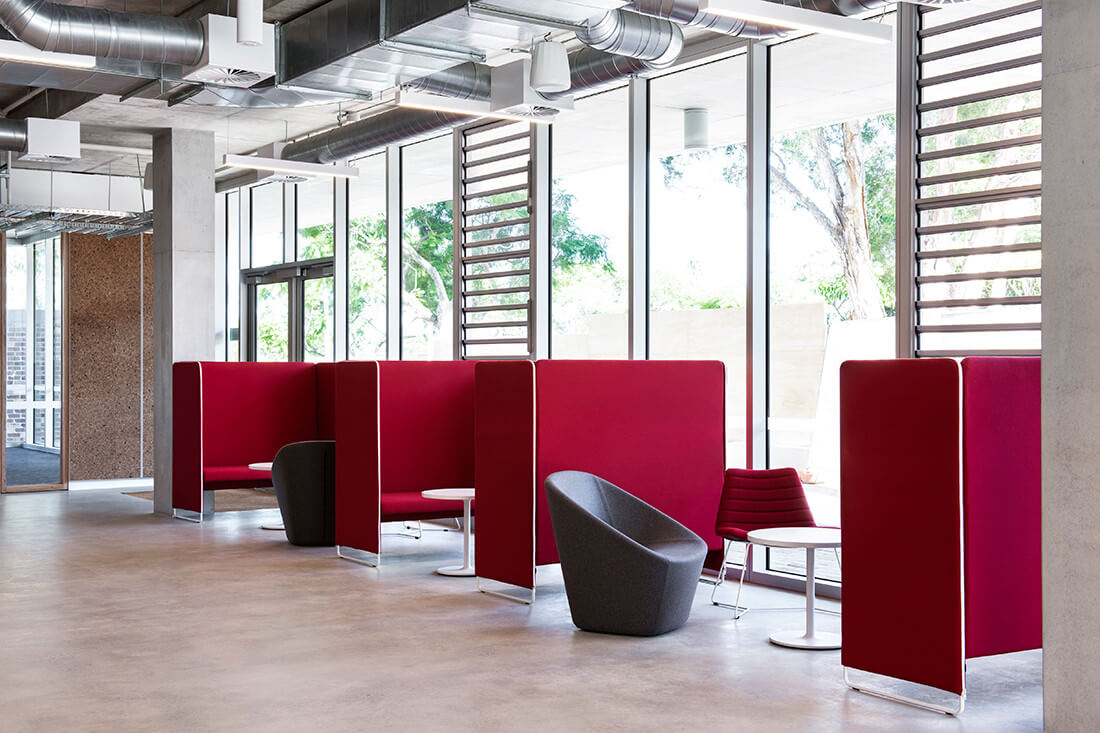Architecture has always evolved to respond to developing human needs and create better environments that benefit human life. For example, London constructed underground sewer systems in response to cholera outbreaks in the 19th century. The city was then built to have wider streets and have more provision for open spaces. In Paris, cramped and unsanitary neighbourhoods were breeding grounds for disease and crime, which led to the Baron Haussmann renovation of the city. This vast public renovation program brought in more space, light, and fresh air, which essentially reduced the occurrence of disease and crime.
According to Rami el Samahy, adjunct professor at MIT’s School of Architecture and Planning, we are going through a new era when our deeper understanding of diseases is once again informing how we design and build for the future. Human behaviour has changed – social distancing is now a standard, more and more people are working from home, online shopping is now more prevalent, and people are more focused on their health. There is a wide re-evaluation of the functionality of space, and a call for increased emphasis on physical safety and mental health through well-designed buildings.
Currently, offices, schools, restaurants and even hospitals aren’t built for the post-COVID-19 world. People are now clamouring for spaces designed for health and safety over aesthetics and value. This includes incorporating smart ventilation into buildings and having greenery as a major feature in city buildings. How else is our understanding of COVID-19 and disease informing how we design and build?
Houses Built for Work
Our houses are not designed to be workspaces. Working from home in the past months have shown us that it can be difficult to perform work because our makeshift workspaces do not mirror our office environment. We don’t have wide tables, no cubicles, no ergonomic office chairs, and no soundproofed areas for productivity.
For work from home spaces to be effective, they must have the right amount of natural lighting and fresh air, especially when working long hours. However, working in balconies, patios and terraces can be quite distracting. In the future, architects expect that there will be more houses with dedicated office spaces. These will have to be professional spaces with the right furniture, and provision for better light quality and ventilation. This will echo the kind of environment you would expect from an office, but separated from any living spaces to better delineate people’s professional and personal lives at home.
Reorganised Offices
As fewer people may be required to go to work physically, the office has to be remodelled to prevent the spread of disease between employees. Office layouts must change, and according to architect David Dewane from Barker/Nestor in Chicago, open floor plans as a trend has been on a decline since before the pandemic, and will no longer be the norm. To respect individuals’ right to privacy and safety, cubicles are now expected to make a comeback, or at least some form of barrier between people.
Teams will most likely be separated into rooms or sections. These smaller rooms will most likely have their own ventilation systems to contain the spread of any harmful airborne micro particles. Likewise, shared workspaces may go out of fashion as well, as these don’t offer as much safety and privacy for employees.
Incorporated Sanitation in High-Traffic Places
Airports, hotels, hospitals, malls, restaurants, schools, and theatres are typically where infections occur because of sheer volume of people, and poor sanitation and ventilation. Perhaps these places will require additional safety and health measures upon entrance. Foyers or designated areas may have temperature checks, fogging and hand sanitation features.
Most probably, architecture in public spaces will enforce a minimalist design where spaces are constructed with cleaner and simpler lines, and with fewer surfaces as possible to avoid accumulating dirt, bacteria, and passing on infectious diseases.
Automation will play a big part in post-pandemic architecture, according to Miami architect Kobi Karp, from Kobi Karp Architecture & Interior Design. The development and use of no-touch technology will be the norm. This means automatic doors and windows, hands-free light switches and faucets, and cell phone-enabled tech may be used anywhere that previously required person-to-person transactions. UV disinfection may also be a staple feature in all these high-traffic areas to minimise any contagion risks.
Focus on Ventilation in Post-Pandemic Architecture
Apart from space and sanitation, high quality ventilation will be key in creating safer buildings. Safetyline Jalousie are advocating for the use of more louvre windows, and automated louvres to provide natural air flow in buildings. Safetyline Jalousie louvre windows are built for top performance even in extreme conditions and designed for sustainability.
Safetyline Jalousie’s latest innovation, SmartAir, offers a post-pandemic ventilation solution for architecture. The fully automated, tried and tested complete turnkey solution improves air quality by monitoring temperature, CO2 levels and humidity. The system naturally ventilates spaces by monitoring internal and external ambient temperatures, automatically locking out AC. SmartAir incorporates morning and night purging options to cool the buildings fabric during unoccupied periods reducing air conditioning energy costs. The system also utilises wind and rain sensors to automatically close the louvres without the need for user interaction. More importantly the SmartAir System meets the requirements for air filtration in enclosed air-conditioned spaces. This ultimately improves the health and wellbeing of building occupants and eliminates the spread of airborne diseases while reducing costs and power consumption.
Are you looking into future-proofing your building projects through high quality ventilation? Contact us to learn more about Safetyline Jalousie louvre windows and the SmartAir System. You may also read our blog about how indoor air quality impacts student academic performance.

























